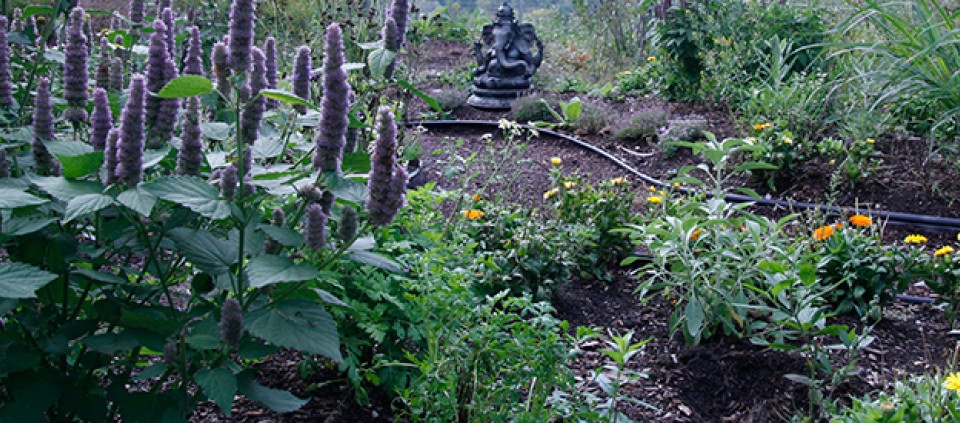Everything’s Coming Up Ayurveda!

With the growing season comes opportunities to plant, sprout, and grow—in our lives and in the earth. The Ayurvedic herb garden at Kripalu is a sacred space that provides a container for both literal and metaphorical growth. Each year, the graduates of the Kripalu School of Ayurveda’s Ayurvedic Lifestyle Consultant training write prayers on small pieces of paper and plant these intentions in the earth, along with the herbs, as a blessing for the incoming class. We not only sprout plants, we sprout dreams!
Among the herbs we grow are rosemary, thyme, lemon balm, bee balm, calendula, ashwagandha, turmeric, lavender—and our most beloved herb, the sacred plant of India: tulsi. Tulsi (Sanskrit for “holy basil”) is in the Lamiaceae (mint) family along with the common sweet basil, and, like sweet basil, it is easy to grow and prolific. Here’s how:
- Start the seeds indoors in the spring, and then transplant them to an earthenware pot or directly into the earth after the frost season is over. Tulsi grows best in direct sunlight.
- Water regularly and pinch off the flowers to send more energy to the leaves.
- You can harvest the leaves a few months into their growing time and lay them out to dry on a screen; if you cut back branches, you can hang them upside down to dry.
The dried leaves make a nourishing, rejuvenating, and immune-boosting tea. Tulsi is also an adaptogen—an herb that nourishes you when you’re depleted and gives you energy when you’re tired. It’s a natural antidote to a stressful world.
© Kripalu Center for Yoga & Health. All rights reserved. To request permission to reprint, please e-mail editor@kripalu.org.
Erin Casperson, Lead Kripalu Faculty and Director of the Kripalu School of Ayurveda, is passionate about sharing how the ancient practices of Ayurveda can be applied to modern-day living.
Full Bio and Programs